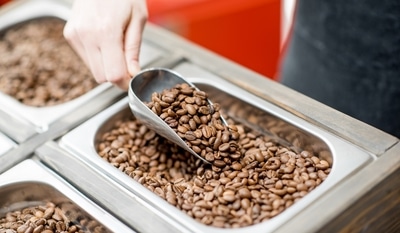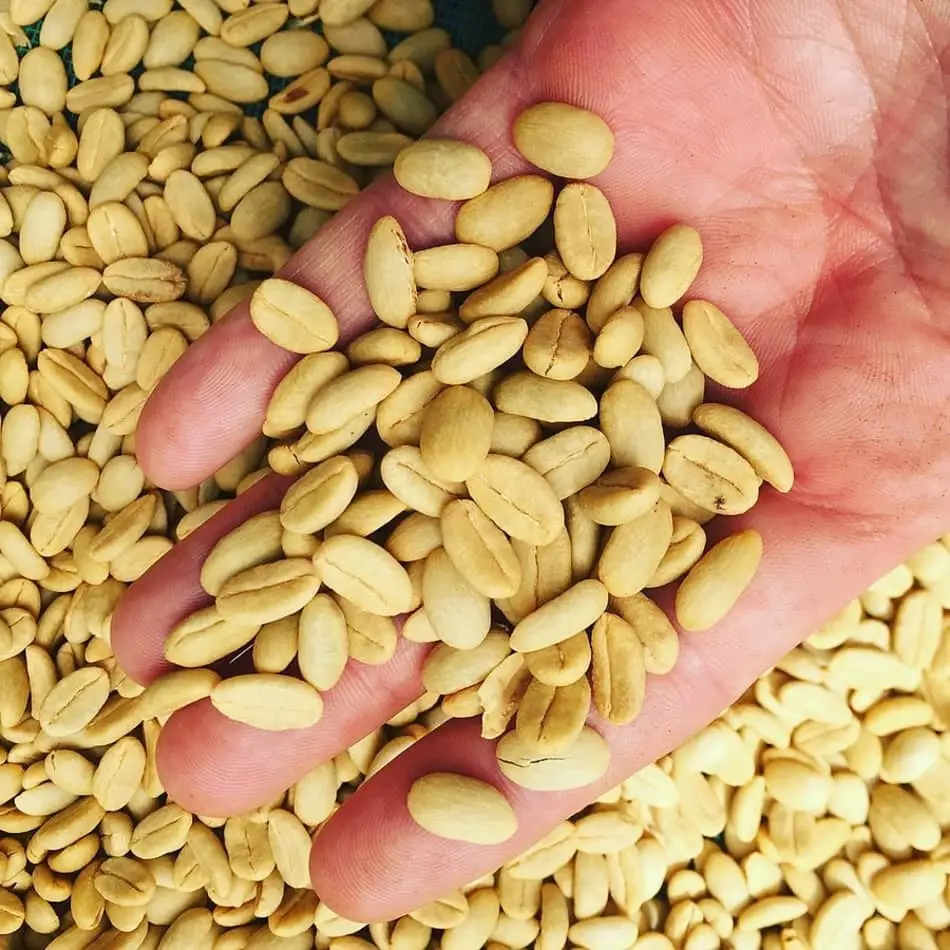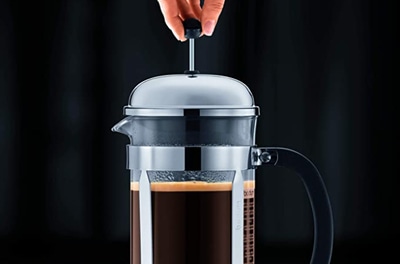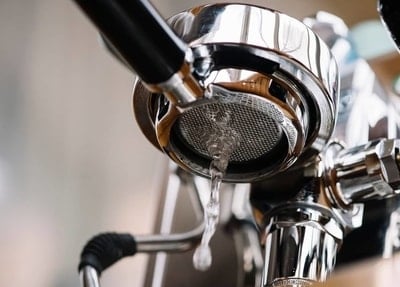Complete Guide to Laurina Coffee (Naturally Low Caffeine)
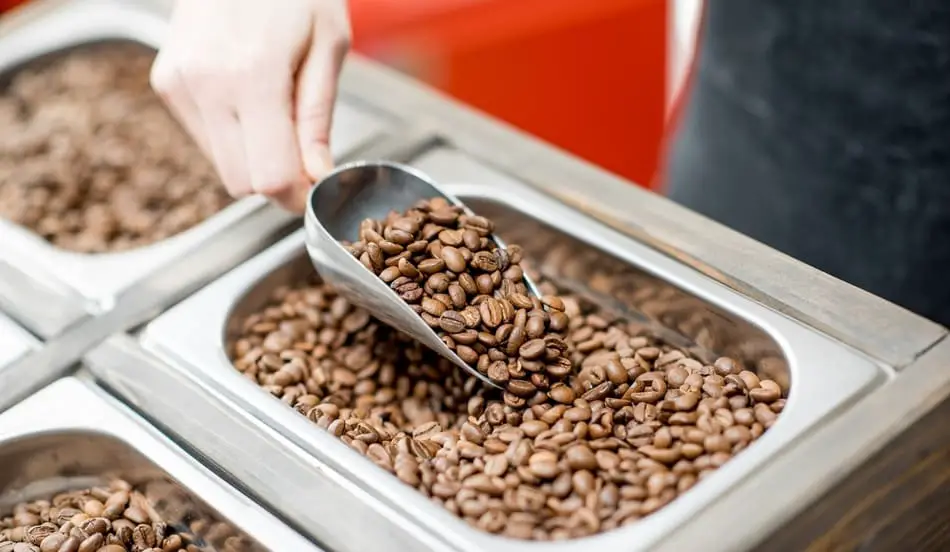
Around 80 percent of the world’s population consumes caffeine in one form or another. However, not everyone is able to enjoy coffee due to a sensitivity to caffeine, which means having to resort to decaf. But what about naturally low caffeine coffee?
Low caffeine coffee is a term used to describe coffee that hasn’t undergone the decaffeination process but, instead, is naturally far lower in caffeine than other types of coffee. Laurina, also known as Bourbon pointu, is one such variety of low caffeine coffee. Laurina contains half the caffeine of arabica coffee.
The decaffeination process strips coffee beans of their natural flavours. So could low caffeine coffee be the answer to a more delicious cup of coffee?
What is low caffeine coffee?
Over 98 percent of the coffee grown worldwide comes from just two species of the Coffea plant genus: arabica (Coffea arabica) and robusta (Coffea canephora).
Of the two species, arabica coffee is of far higher quality than robusta, which is why packs of 100 percent arabica coffee beans demand higher prices.
Arabica is the most widely consumed coffee variety on earth, making up between 60 – 70 percent of the total coffee production worldwide. Most of the remaining 30 – 40 percent is made up of robusta, with less than two percent coming from another species called liberica (Coffea liberica).
What you probably didn’t know is that arabica contains significantly lower levels of caffeine than robusta. On average, arabica has approximately half the caffeine content of robusta.
A single robusta coffee bean contains around 10 milligrams of caffeine. By dry weight, a robusta coffee bean is between 2.2 – 2.7 percent caffeine. This means that it contains 2.2 – 2.7g of caffeine per 100g (3.5oz).[1]
A single arabica coffee bean contains six milligrams of caffeine. By dry weight, an arabica coffee bean is between 1.2 – 1.5 percent caffeine. This means that it contains 1.2 – 1.5g of caffeine per 100g (3.5oz).[2]
Despite containing half the levels of caffeine, most strains of arabica still have significant caffeine levels that are more than enough to disrupt sleep or cause upset to those with a sensitivity to caffeine.
As always in nature, each parent species is made up of a number of subspecies or groups. The same is true of the coffee plant. Within arabica and robusta, there are many subtypes, known as varietals or cultivars, which each have their own characteristics.
There are well over 40 different varietals of arabica and, along with each plant’s differing size, production yield and flavour, is the plant’s caffeine content.
Laurina, also known as Bourbon pointu, is one such arabica varietal that naturally contains far less caffeine than other arabicas. Its scientific name is Coffea arabica var. laurina (or Coffea arabica cv. laurina).
Laurina: the naturally low caffeine coffee beans
Laurina coffee rose to the headlines in 2015 when Starbucks roasted and sold a single harvest of 340kg (750lbs) of Nicaraguan laurina in 20 select stores around the US.[3][4]
On average, laurina contains around the half the caffeine content of most other varieties of arabica. And in fact, at its lowest, laurina may contain just one-fifth of the caffeine content.
When compared to the robusta variety, which contains the highest caffeine content, laurina may contain as little as one-tenth of the caffeine content.
| Caffeine per bean | Caffeine per 100 grams | Caffeine per ounce | |
|---|---|---|---|
| Robusta | 10mg | 2.2 – 2.7g | 630 – 770mg |
| Arabica | 6mg | 1.2 – 1.5g | 340 – 430mg |
| Low caffeine laurina | 3mg | 0.4 – 0.75g | 114 – 213mg |
The fact that the laurina plant is naturally lower in caffeine means that it retains all of its natural flavours, something which is not true for coffees that undergo the decaffeination process.
If you are a decaf drinker, you may have noticed the lack of taste and aroma compared to regular, caffeinated coffee.
Because of this, the decaffeination process is quite controversial. Many coffee roasters refuse to buy and roast decaf coffee because of the adverse effects on its flavour.
The decaffeination process causes the coffee beans to lose a lot of their natural flavours, leaving the beans with a generic ‘decaf flavour’, which can be described as toasty, burned and cardboardy.
Because laurina hasn’t undergone any processing to remove the caffeine, laurina coffee beans have all the same delicious flavours that any other variety of arabica would have.
This has led to certain specialty coffee roasters to offer laurina as an alternative to decaf as there is no compromise in flavour whatsoever.
How does low caffeine coffee compare to decaf?
Containing half the caffeine content of other arabica varieties, laurina still contains more caffeine than decaffeinated coffee.
For a coffee to be decaffeinated, the beans have to be 97 percent free of caffeine under US law and 99.9 percent caffeine-free under EU law.[5][6]
So, how does that translate into a typical cup of brewed filter coffee?
| Beverage | Caffeine per 250ml (8.5fl oz) serving |
|---|---|
| Robusta filter coffee | 180mg |
| Arabica filter coffee | 100mg |
| Laurina filter coffee | 50mg |
| Decaf | 6mg |
Laurina contains just over eight times more caffeine than decaf, which could cause disruptions to your sleep.
But at just under a quarter of robusta, the levels could be low enough for those that are highly sensitive to caffeine.
The excellent thing about laurina is that it hasn’t undergone any processing that negatively impacts on the taste, which is something that cannot be said for decaf. So how does laurina coffee taste?
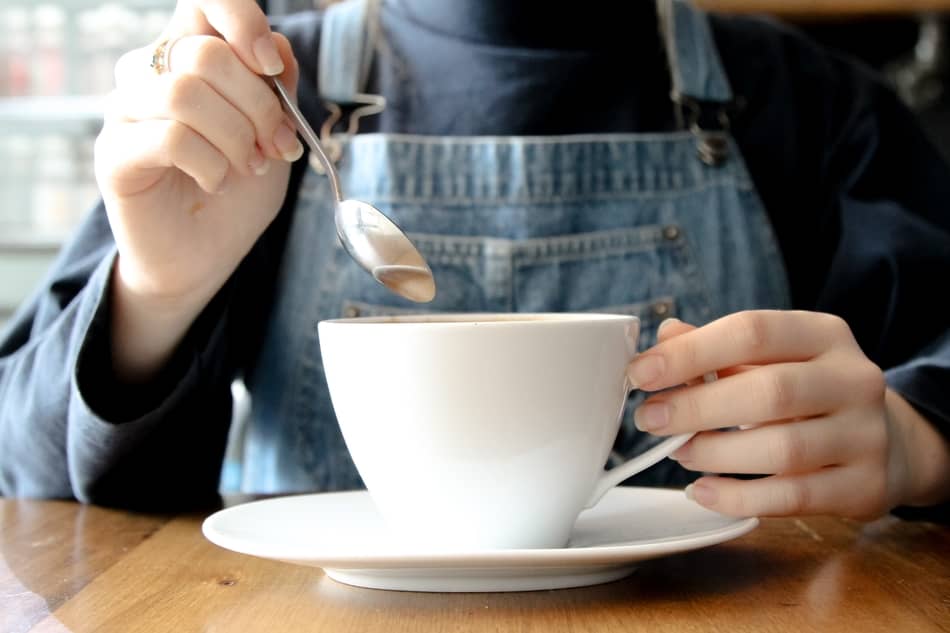
Laurina coffee taste
Laurina is a beautifully light coffee with characteristics more akin to tea. It has a delicious sweetness and a refreshing acidity with no bitterness. Laurina displays flavours and aromas such as peach, papaya, plum and honey, as well as wonderfully fragrant floral notes.
Laurina has such stunning characteristics because it’s of the arabica variety. The make-up of arabica is vastly different from robusta, having more sugars, less bitter compounds and more oils.
The higher levels of sugar contributes, of course, to an increased sweetness in arabica coffee beans.
Caffeine is intensely bitter, which is why the lower content levels in arabica, and especially in laurina, mean that it’s not noticeably bitter.
The higher levels of oils also work to mask bitterness. This is why we use olive oil in our vinaigrettes as it serves to cover over the bitterness found in many vegetables such as lettuce.
Robusta is inferior to arabica with harsh woody, rubbery, burned notes, which is why it’s used in the production of instant coffee. The increased caffeine levels contributes to the bitterness found in robusta.
Where to buy laurina coffee beans
The production of laurina is still steadily growing, but it is becoming more and more increasingly available.
Here is a list of some of the world’s best coffee roasters that currently stock or have stocked laurina in the past. Every roaster on the list ships internationally.
The history of laurina and Bourbon pointu
Bourbon pointu is considered the same as laurina by agronomists, with Bourbon referring to where it was first found on Reunion Island, a French overseas territory in the Indian Ocean that was formally called Bourbon.
Discovery
In the 18th century, Reunion became one of the main suppliers of coffee to Europe. Bourbon pointu was first documented as early as 1711 by the secretary of the East India Company during a trip to Reunion Island.
Early in the 18th century, arabica coffee had been taken from Yemen to be cultivated in Reunion. The plants thrived so well in the Reunionese climate that they began to acquire their own identity. The continual mutation of the original Bourbon arabica variety became Bourbon pointu (Coffea arabica cv. laurina).[3]
It was clear how this new variety got its name. Bourbon pointu (French, ‘pointed’) had a dwarf stature with a pointed, Christmas tree-like shape, leaves that were more rounded, coffee cherries fruits that were pointed, and elongated beans that tapered to a point.
The coffee was initially called Café du Roy (French, ‘coffee of the king’) but was renamed after the French Revolution to Café Leroy after one of its first cultivators who had died in 1770.
Production peaked at 4,000 tonnes (8,818,000lbs) in 1800. However, this fell rapidly due to the rise in sugar cane production as well as the succession of climatic disasters that hit the island. By the end of the century in 1880, Bourbon pointu had almost been wiped out.
All was not lost, however, as Bourbon pointu was introduced to New Caledonia following the takeover of the Oceanian archipelago under the leadership of Napolean III. The plant was introduced from Reunion by Marist Brothers, an international community of Catholic Religious Institute of Brothers founded in Lyon, France.
Later in 1911, the coffee specialist called Paul Jobin discovered that Leroy coffee (Bourbon pointu) was being sent from New Caledonia to be sold in Paris.
Jobin established contacts with the colony and began a company called Havre Calédonienne, which launched advertising campaigns to promote the coffee variety in mainland France. This would mark the beginning of a fortuitous period of forty years for the cultivation of coffee in the Pacific archipelago.
The golden age for Bourbon pointu came to an unfortunate end in the mid-1950s when the New Caledonian crops suffered an outbreak of coffee leaf rust (Hemileia vastatrix), a devastating fungal disease that still plagues coffee plantations today.
Despite almost having been wiped out on Reunion, Bourbon pointu was still being exported to mainland France, albeit in small quantities. However, the last recorded cargo sent from Reunion to mainland France was in 1942 and only contained 200kg (441lbs). Thereafter, Bourbon pointu seemingly disappeared, with everyone assuming that it had become extinct.
Rediscovery
At 18 years of age, Yoshiaki Kawashima, the eldest son of a wholesale coffee roaster in Japan, first heard of Bourbon pointu during his time studying abroad at the National Coffee Research Institute in El Salvador in the 1970s. This was the beginning of his obsession with rare and mysterious coffee varieties.
In 1981, he joined the Japanese coffee company UCC Ueshima Coffee Co. Ltd., during which he established coffee plantations in Jamaica, Hawaii and Indonesia.
In 1999, Yoshiaki Kawashima took a business trip to Reunion in the hopes of rediscovering the forgotten Bourbon pointu. Sadly, the collapse of the island as a coffee producing region left him disappointed.
The islanders had even seemed to have forgotten their rich history in coffee production, with one person even going so far as to lead Kawashima to the local supermarket, telling him, “There is coffee here.”
Despite the disappointment, Kawashima was undeterred. He continued on his quest, interviewing plantation owners and municipal officials on the island in his relentless quest to track down the coffee plant.
Success eventually came two years later when he learnt that a veterinarian had found 30 Bourbon pointu plants in the wild.
Kawashima devoted the following eight years to the re-cultivation of Bourbon pointu, becoming the driving force behind the project.
Meanwhile, more Bourbon pointu plants were found by researchers in Creole gardens on the island, where they had survived for several decades.
Creole gardens are a type of agroecosystem common in Reunion. They are used for the production of fruits and vegetables and feature a great diversity of different plant species.
Five years of research ensued to select the best lines from the findings. Finally in 2003, the 27 best lines were identified, propagated and planted. A year and a half later, they were harvested for the first time.
The first packets, which were sold in Japan, were produced from the two tonnes (440,925lbs) of green coffee harvested in 2006. The crop met with huge enthusiasm on the part of the tasters involved in the project.
The coffee had exceptional sensorial properties, with fruity notes such as orange, mandarin and even lychee in the case of some lots.
In 2007, the Speciality Coffee Association in Japan awarded it the rare distinction of premium coffee, an award given to coffee ‘that is entirely without fault’.
Laurina in Central America
Coincidentally, around the same time in 2002, Edgardo Alqipzar, an agronomy undergraduate from Costa Rica, discovered some laurina coffee trees.
In 2003, Edgardo Alpízar, took two laurina coffee trees and planted them on his family’s Santa Eduviges farm at the Doka Estate in Alajuela in order to test the quality of the coffee and also to see whether it would survive.
His experiment had good results, producing enough coffee cherries to process the coffee beans housed inside.
However, the production turned out to be unprofitable due to the crops being attacked by pests. Caffeine is the coffee plant’s natural pesticide and is vital for its survival. The low caffeine content of laurina meant that it struggled to survive.
Underterred, Alpízar carried out more tests. The first was to sow at a height of 1,400 meters (4600ft) above sea level. The higher the altitude, the fewer the pests and the more chance of survival.
Eventually, he was able to obtain 80 plants, of which he selected the best 17. By 2006, he had managed to process larger quantities of laurina, sending samples to coffee roasters. The coffee roasters were delighted with the laurina being produced on the farm.
Because of the success in 2006, Alpízar sent samples of the 2018 harvest to the Center for International Cooperation in Agronomic Research for Development (CIRAD) in France. CIRAD confirmed that the caffeine content was lower.
The Doka Estate is still producing laurina coffee today, which is available on its website.

